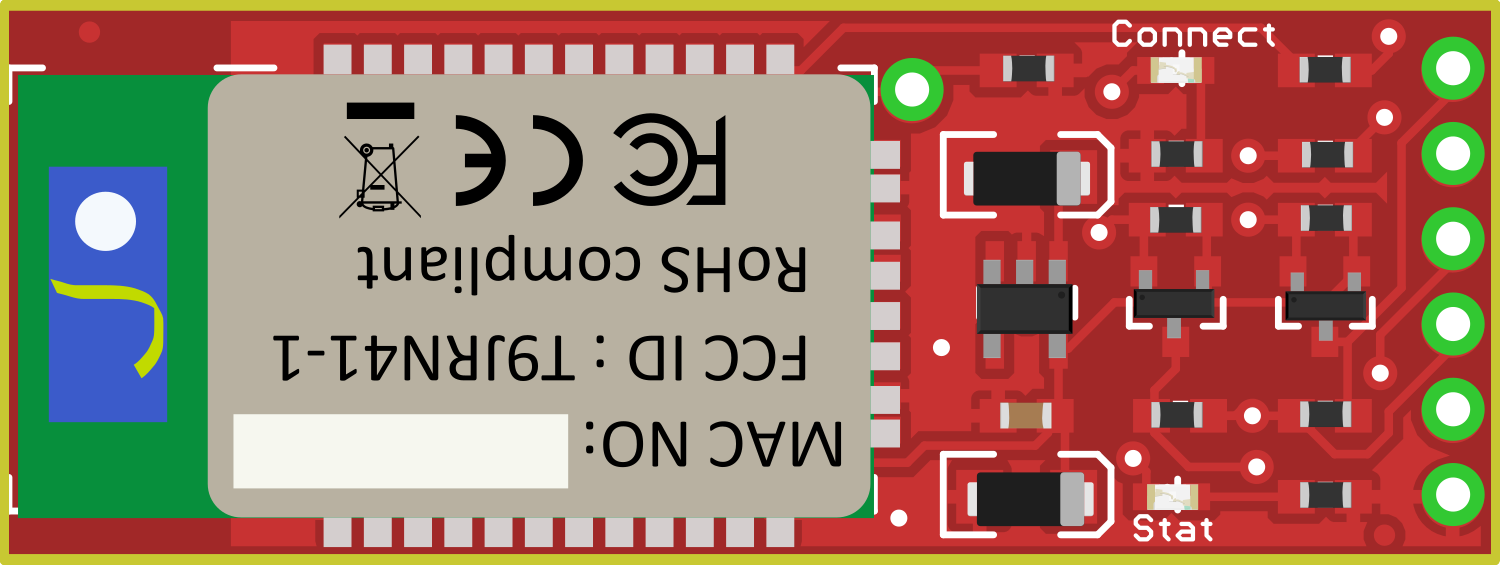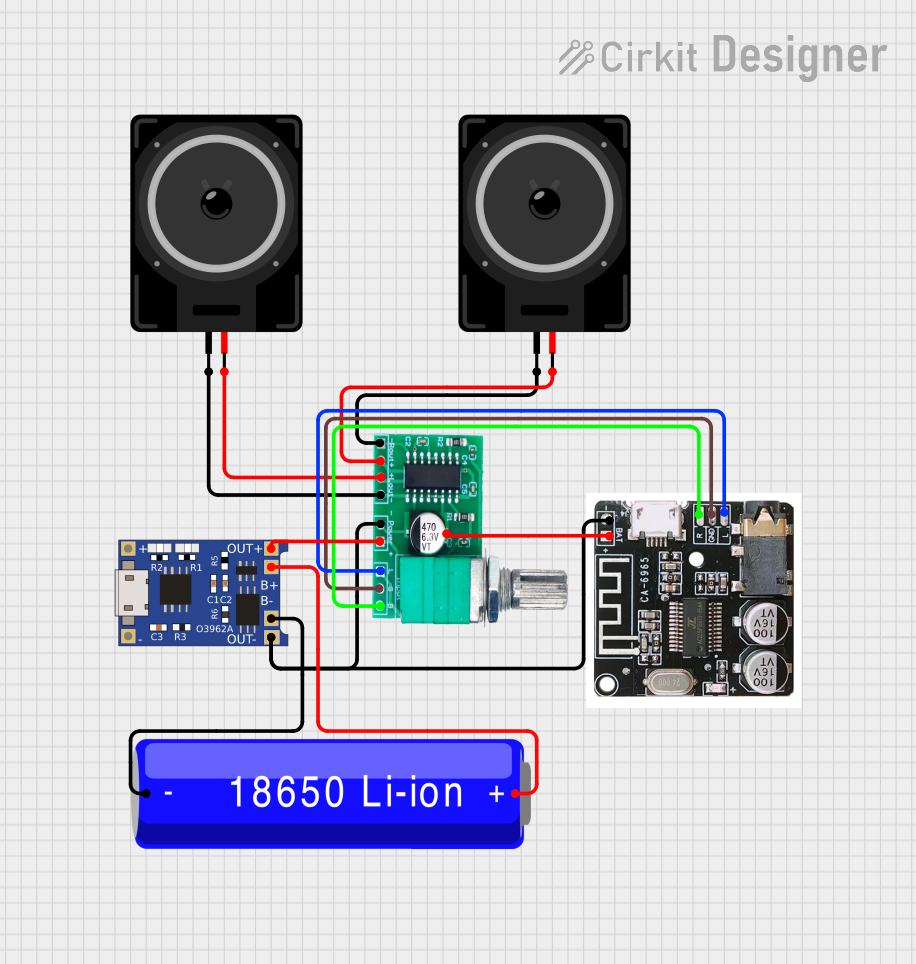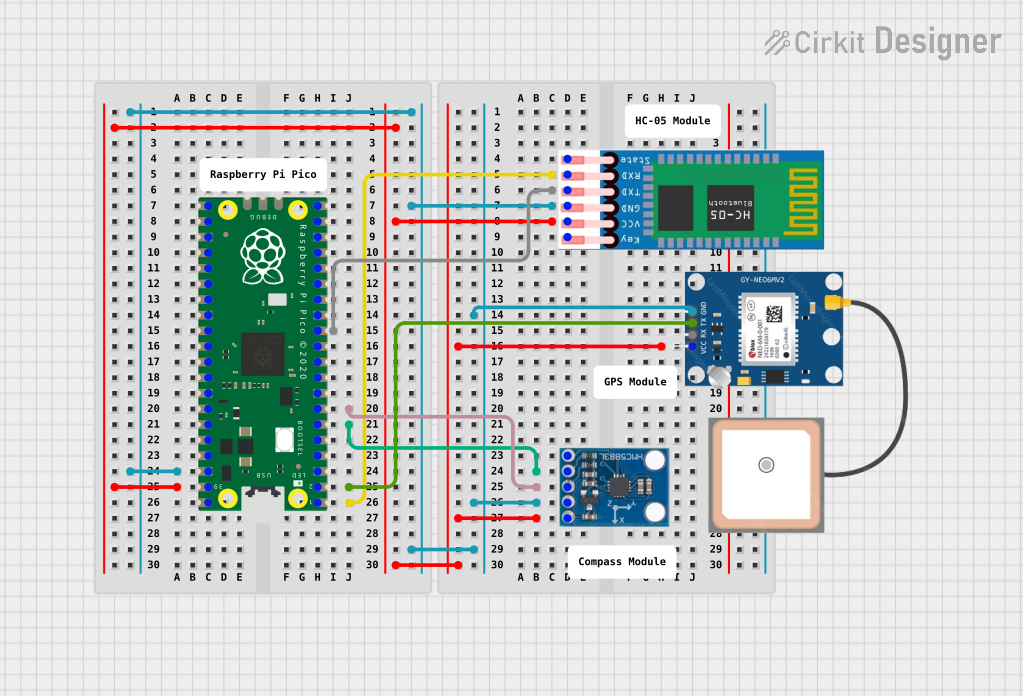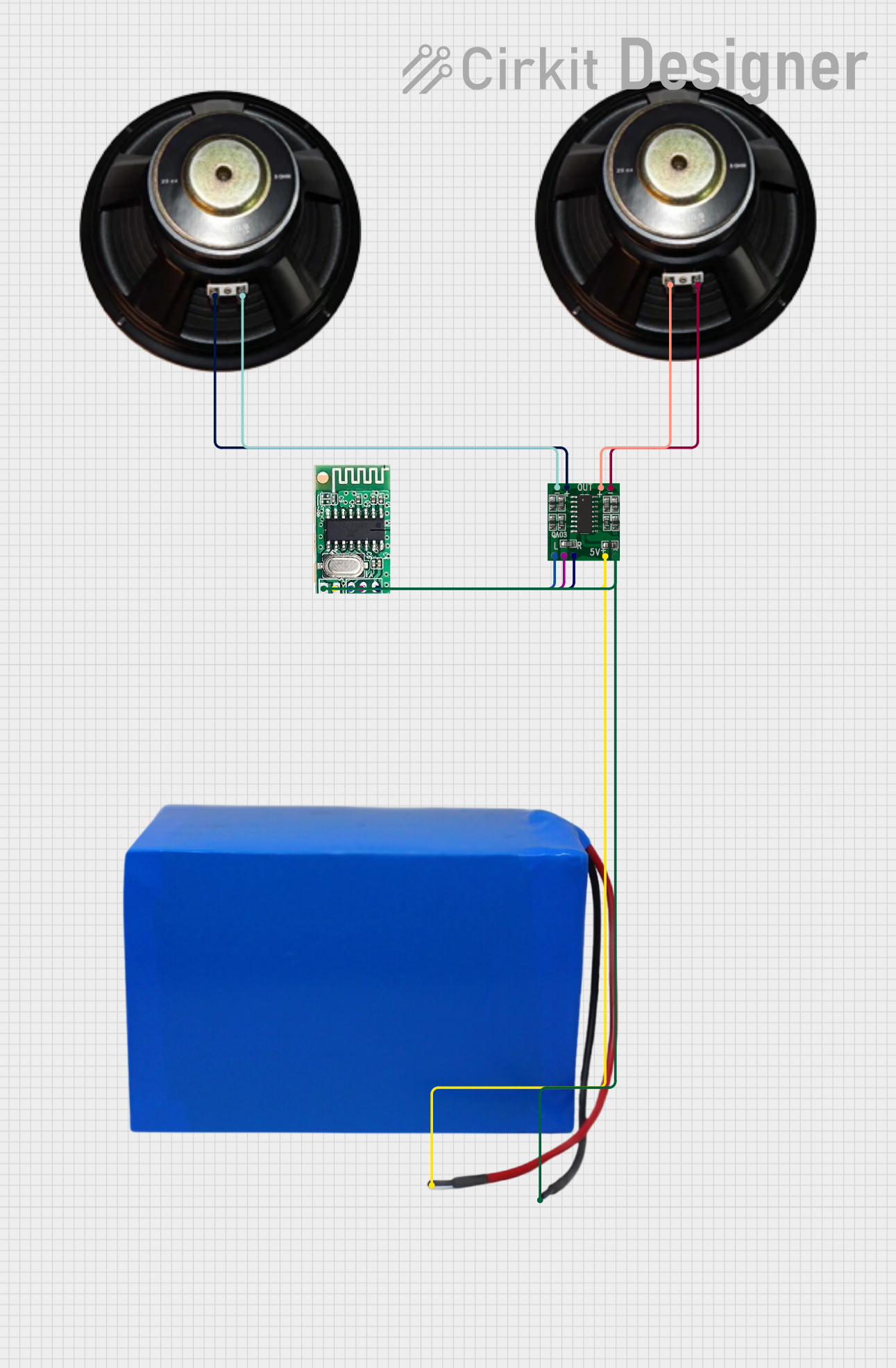
How to Use Bluetooth Mate Gold: Examples, Pinouts, and Specs

 Design with Bluetooth Mate Gold in Cirkit Designer
Design with Bluetooth Mate Gold in Cirkit DesignerIntroduction
The Bluetooth Mate Gold is a wireless communication module designed for easy integration into projects requiring Bluetooth connectivity. It is based on the Roving Networks RN-41 module, which is a small form-factor, low-power Bluetooth radio that supports Bluetooth 2.1 + EDR. The module is perfect for applications such as wireless sensor networks, robot control, or any other projects where a serial cable would be a constraint.
Explore Projects Built with Bluetooth Mate Gold

 Open Project in Cirkit Designer
Open Project in Cirkit Designer
 Open Project in Cirkit Designer
Open Project in Cirkit Designer
 Open Project in Cirkit Designer
Open Project in Cirkit Designer
 Open Project in Cirkit Designer
Open Project in Cirkit DesignerExplore Projects Built with Bluetooth Mate Gold

 Open Project in Cirkit Designer
Open Project in Cirkit Designer
 Open Project in Cirkit Designer
Open Project in Cirkit Designer
 Open Project in Cirkit Designer
Open Project in Cirkit Designer
 Open Project in Cirkit Designer
Open Project in Cirkit DesignerCommon Applications and Use Cases
- Wireless data logging
- Remote control for robots or drones
- Serial communication between devices without wiring
- DIY electronics projects with Bluetooth capability
- Home automation systems
Technical Specifications
Key Technical Details
- Bluetooth Technology: Bluetooth 2.1 + EDR
- Frequency: 2.4 GHz ISM band
- Modulation: GFSK (Gaussian Frequency Shift Keying)
- Data Rate: Up to 3 Mbps
- Operating Voltage: 3.3V to 6V DC
- IO Voltage: 3.3V (Do not exceed 3.3V on RX or TX)
- Current Consumption: 25mA average, 30mA peak during transmission
- Security: Authentication and encryption
- Range: Up to 100 meters (328 feet) in open space
Pin Configuration and Descriptions
| Pin Number | Name | Description |
|---|---|---|
| 1 | GND | Ground connection |
| 2 | VCC | Power supply (3.3V to 6V DC) |
| 3 | CTS-I | Clear to Send Input, active low |
| 4 | VCC | Power supply (3.3V to 6V DC) |
| 5 | TX-O | Transmit Data Output (connect to RX of host device) |
| 6 | RX-I | Receive Data Input (connect to TX of host device) |
| 7 | RTS-O | Request to Send Output, active low |
| 8 | GND | Ground connection |
Usage Instructions
How to Use the Component in a Circuit
- Powering the Module: Connect the VCC pin to a 3.3V to 6V power supply and the GND pin to the ground of your power source.
- Serial Communication: Connect the TX-O pin of the Bluetooth Mate Gold to the RX pin of your host device (e.g., Arduino UNO), and the RX-I pin to the TX pin of your host device.
- Pairing: Power the module and pair it with your Bluetooth-enabled device. The default pairing code is usually '1234' or '0000'.
- Data Transmission: Once paired, you can send and receive data via the Bluetooth connection using standard serial communication protocols.
Important Considerations and Best Practices
- Ensure that the power supply is within the specified range (3.3V to 6V DC).
- Do not exceed 3.3V on the RX or TX pins to avoid damaging the module.
- When connecting to a 5V device like an Arduino UNO, use a voltage divider or level shifter for the RX pin.
- Always pair the module with a secure and trusted device to prevent unauthorized access.
- Place the module away from metal objects and other sources of RF interference to maximize range and performance.
Example Code for Arduino UNO
#include <SoftwareSerial.h>
// RX, TX pins for the Bluetooth Mate Gold
const int bluetoothTx = 10; // Connect to RX-I of the module
const int bluetoothRx = 11; // Connect to TX-O of the module
SoftwareSerial bluetoothSerial(bluetoothRx, bluetoothTx);
void setup() {
// Start the serial communication with the host computer
Serial.begin(9600);
// Start the serial communication with the Bluetooth module
bluetoothSerial.begin(115200); // Default baud rate of the module
Serial.println("Bluetooth Mate Gold is ready to pair");
}
void loop() {
// Check if data received from the Bluetooth module
if (bluetoothSerial.available()) {
char toSend = (char)bluetoothSerial.read();
Serial.print(toSend); // Send it to the host computer
}
// Check if data received from the host computer
if (Serial.available()) {
char toSend = (char)Serial.read();
bluetoothSerial.print(toSend); // Send it to the Bluetooth module
}
}
Troubleshooting and FAQs
Common Issues Users Might Face
- Inability to Pair: Ensure the device is in pairing mode and the correct pairing code is used.
- No Data Transmission: Check the wiring, especially the RX and TX connections. Ensure the baud rate matches the module's default rate.
- Intermittent Connection: Move the module away from metal objects and sources of RF interference.
Solutions and Tips for Troubleshooting
- Power Issues: Verify that the power supply is stable and within the specified voltage range.
- Correct Baud Rate: Make sure the baud rate in your code matches the module's default baud rate (115200).
- Module Not Discoverable: Reset the module or check if it's already paired with another device.
FAQs
Q: Can I use the Bluetooth Mate Gold with a 5V microcontroller? A: Yes, but ensure that the RX pin of the module is connected through a voltage divider or level shifter to bring the voltage down to 3.3V.
Q: What is the default pairing code for the Bluetooth Mate Gold? A: The default pairing code is typically '1234' or '0000'.
Q: How can I change the name or baud rate of the Bluetooth Mate Gold? A: You can use AT commands to configure the module. Refer to the RN-41 datasheet for the specific commands and procedures.
Q: What is the range of the Bluetooth Mate Gold? A: The module has a range of up to 100 meters (328 feet) in open space, but this can be reduced by obstacles and interference.